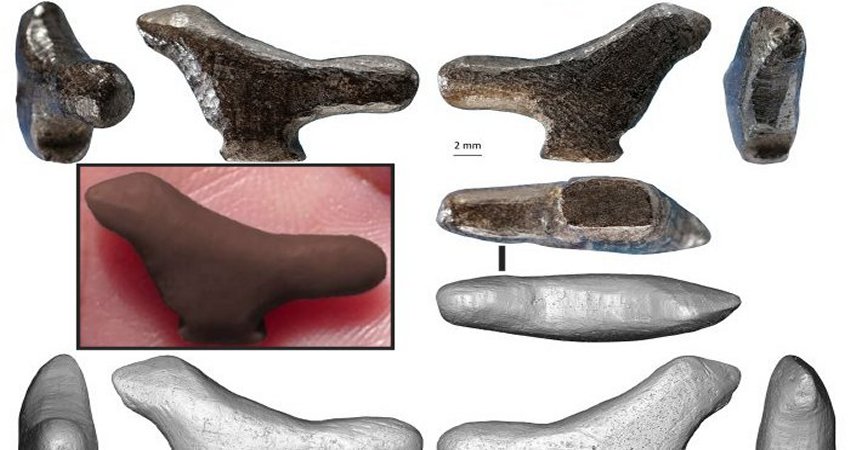Conny Waters – MessageToEagle.com – A small standing bird carving—the oldest instance of East Asian three-dimensional art ever discovered has been studied by Zhanyang Li from Shandong University, China, and colleagues.

Photograph and 3D μ-CT reconstitution of the miniature bird figurine discovered at Lingjing (Henan Province, China), dated to 13 500 years ago. Credit: Francesco d’Errico and Luc Doyon
During Li’s initial excavation at Lingjing in 2005, he uncovered eleven distinct stratified layers ranging in age from 120,000 years ago to the Bronze Age —and found that most of the fifth layer had been removed during a well-digging operation in 1958.
However, the refuse heap from the well’s creation was still intact and remained nearby. After sifting through the sediment in the refuse heap, the authors discovered black flint identical to (and only found in) what remained of Layer 5 at the dig site.
The carving was found among burnt animal remains and fragments of ceramics at a site in north-central Henan province.
They also uncovered several artifacts, including pottery sherds, burned animal remains, and the bird figurine, which is carved from bone and shaped like a songbird on a pedestal.
Using radiocarbon dating on the uncovered burned animal remains (including one bone with anthropogenic gouging marks also observed on the bird carving), the authors were able to estimate the age of the bird figurine and associated bone material to be approximately 13.4-13.2 ka cal BP. Based on evidence from other Northern Chinese sites of similar age, this suggests that hunter-gatherers with stone tool technologies occupied Lingjing and created the bird carving during this time.
Bird representations are a theme in Chinese Neolithic art, with the oldest example a jade songbird dated to approximately 5 ka BP.
This Paleolithic bone bird figurine from Lingjing predates previously known instances from this region by almost 8,500 years and has several technological and stylistic elements distinguishing it from contemporaneous representations of birdlike creatures from Western Europe and Siberia (such as the pedestal on which the Lingjing bird is perched). Though more examples of Paleolithic carving art are needed to confirm this possibility, the Lingjing bird figurine suggests the presence of a longstanding artistic tradition specific to East Asia, with origins much earlier in the Paleolithic.
“This discovery identifies an original artistic tradition and pushes back by more than 8,500 years the representation of birds in Chinese art, Li and his colleagues stated.
“The figurine differs technologically and stylistically from other specimens found in Western Europe and Siberia, and it could be the missing link tracing the origin of Chinese statuary back to the Palaeolithic period.”
Written by Conny Waters – MessageToEagle.com – AncientPages.com Staff Writer







